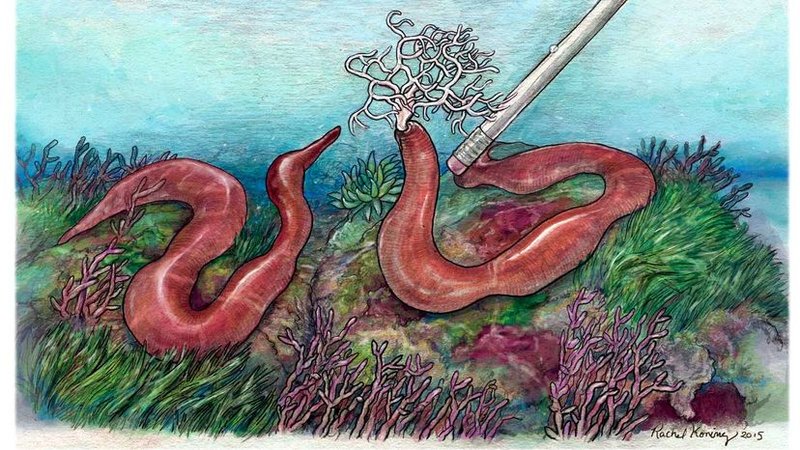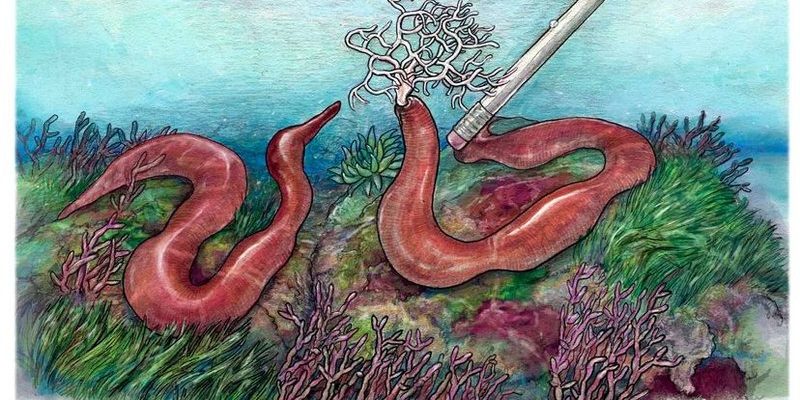
Bootlace worms, or *Lineus longissimus*, are actually found in coastal waters, mostly around Europe. They’re often hidden away in the sand or seaweed, making them less visible to casual beachgoers. But once you learn about them, you’ll realize just how extraordinary these creatures are. Let’s dive into their world and uncover the secrets behind their impressive growth.
What Exactly Are Bootlace Worms?
Bootlace worms belong to a group of organisms known as **nemerteans**. These worms are notable for their incredible length and flexibility. They come in various colors, from bright reds to muted browns, which helps them blend into their surroundings. But it’s not just their size that’s fascinating; these critters have some pretty impressive biology too.
Typically, bootlace worms have a long and slender body. They can look a bit like a ribbon floating in the water, especially when they swim. You might be wondering how they can grow so long without snapping! Their bodies are made up of a series of segments that allow them to stretch and contract. This flexibility is crucial for finding food, escaping predators, or even mating.
The Amazing Growth of Bootlace Worms
So, how exactly do bootlace worms grow to such astonishing lengths? The key lies in their growth patterns and habitat. Bootlace worms can grow rapidly in ideal conditions. Think of it like a plant thriving with plenty of sunlight and water. In the right environment—typically warmer waters with abundant food sources—they can gain several centimeters in a single week.
These worms have an interesting way of reproducing too. They can asexually reproduce through a process called fragmentation, where a part of their body breaks off and develops into a new worm. This method not only helps them maintain their population but also allows them to increase their overall length since they can grow back lost segments.
Where Do Bootlace Worms Live?
Bootlace worms primarily inhabit the **coastal waters** of Europe, particularly around the British Isles, but they can also be found in other parts of the world. These fascinating creatures prefer areas with soft sediments, like mud and sand, where they can burrow and hide from predators.
Their habitat is crucial for their survival. They often reside in coastal regions, where they can access a variety of prey. Bootlace worms are carnivorous, feeding on small marine animals like crustaceans and other worms. By living in nutrient-rich areas, they ensure a steady supply of food, supporting their incredible growth.
How Do Bootlace Worms Move?
If you’ve ever watched a worm squirm, you know they can be quite the acrobat. Bootlace worms have a unique way of moving that reflects their length. They use a combination of muscles and a slimy substance called mucus to glide through water and sand.
When swimming, bootlace worms can create waves along their body, which helps propel them. It’s almost like watching an intricate dance in the water. You might even find them stretching out in long, elegant loops as they explore their surroundings. It’s a sight to behold!
Are Bootlace Worms Dangerous?
You might be concerned about whether these elongated worms can pose any threat to humans. The good news is that bootlace worms are generally harmless. They don’t have a biting mechanism like some other marine creatures, although they can be a bit of a nuisance if touched because of their slimy texture.
However, it’s worth noting that they do possess a **toxic slime** that can deter predators. While it’s not dangerous to humans, it’s a good idea to observe these worms from a distance. Like many creatures in nature, they prefer to be left alone.
The Environmental Impact of Bootlace Worms
Bootlace worms play an essential role in the marine ecosystem. By feeding on smaller organisms, they help regulate populations and maintain balance in their habitats. Additionally, their burrowing behavior helps aerate the seabed, promoting the health of their ecosystem.
These worms also serve as a food source for various marine animals, including fish and even some birds. This interconnectedness is vital for the health of the ocean and showcases how each creature, no matter how small or long, has a role to play.
Bootlace worms may not be the first creatures that come to mind when thinking about marine life, but they are undeniably fascinating. With their incredible growth potential and unique adaptations, they remind us that nature is full of surprises.
Whether you’re a curious beachgoer or a budding marine biologist, understanding bootlace worms adds another layer to our appreciation of ocean life. Next time you’re by the coast, take a moment to think about what lies beneath the surface—it may just be a bootlace worm wiggling its way through the sand!

